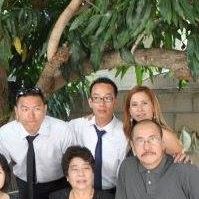Chi Z Lu
age ~84
from Fremont, CA
- Also known as:
-
- Chi Zen Lu
- Chi Living Lu
- Chi H Lu
- Chi Z Wang
- Chris S Wang
- Chizen Lu
- Lu Chi Zen
- Chihwa Lu
- Lu Chi
- Lu Zen
- Phone and address:
- 278 Hidalgo Ct, Fremont, CA 94539
Chi Lu Phones & Addresses
- 278 Hidalgo Ct, Fremont, CA 94539
- 78 Madrid Pl, Fremont, CA 94539
- Kensington, CA
- New Haven, CT
- Truckee, CA
- Alameda, CA
Us Patents
-
Methods And Apparatus For Processing A Substrate
view source -
US Patent:20220359224, Nov 10, 2022
-
Filed:May 4, 2021
-
Appl. No.:17/307383
-
Inventors:- Santa Clara CA, US
Chi LU - Cupertino CA, US
He REN - San Jose CA, US
Mehul NAIK - San Jose CA, US -
International Classification:H01L 21/3213
H01L 21/033
H01L 21/67
H01J 37/32 -
Abstract:Methods and apparatus for processing a substrate are provided. For example, a method of processing a substrate comprises supplying oxygen (O) into a processing volume of an etch chamber to react with a silicon-based hardmask layer atop a base layer of ruthenium to form a covering of an SiO-like material over the silicon-based hardmask layer and etching the base layer of ruthenium using at least one of Oor chloride (Cl) while supplying nitrogen (N) to sputter some of the SiO-like material onto an exposed ruthenium sidewall created during etching.
-
Method Of Forming Interconnect For Semiconductor Device
view source -
US Patent:20230045689, Feb 9, 2023
-
Filed:Oct 18, 2022
-
Appl. No.:17/968201
-
Inventors:- Santa Clara CA, US
Chi Lu - Sunnyvale CA, US
He Ren - San Jose CA, US
Chi-I Lang - Cupertino CA, US
Ho-yung David Hwang - Cupertino CA, US
Mehul Naik - San Jose CA, US -
Assignee:Applied Materials, Inc. - Santa Clara CA
-
International Classification:H01L 21/768
H01L 21/3213
H01L 21/306
H01L 21/027 -
Abstract:A method of forming an interconnect structure for semiconductor devices is described. The method comprises etching a patterned interconnect stack for form first conductive lines and expose a top surface of a first etch stop layer; etching the first etch stop layer to form second conductive lines and expose a top surface of a barrier layer; and forming a self-aligned via.
-
Method Of Forming Interconnect For Semiconductor Device
view source -
US Patent:20210125864, Apr 29, 2021
-
Filed:Oct 24, 2019
-
Appl. No.:16/662200
-
Inventors:- Santa Clara CA, US
Chi Lu - Sunnyvale CA, US
He Ren - San Jose CA, US
Chi-I Lang - Cupertino CA, US
Ho-yung David Hwang - Cupertino CA, US
Mehul Naik - San Jose CA, US -
International Classification:H01L 21/768
H01L 21/027
H01L 21/203
H01L 21/306
H01L 21/3213 -
Abstract:A method of forming an interconnect structure for semiconductor devices is described. The method comprises etching a patterned interconnect stack for form first conductive lines and expose a top surface of a first etch stop layer; etching the first etch stop layer to form second conductive lines and expose a top surface of a barrier layer; and forming a self-aligned via.
-
Diamond-Like Carbon As Mandrel
view source -
US Patent:20180358229, Dec 13, 2018
-
Filed:Jun 7, 2018
-
Appl. No.:16/002218
-
Inventors:- Santa Clara CA, US
Eswaranand Venkatasubramanian - Santa Clara CA, US
Pramit Manna - Sunnyvale CA, US
Chi Lu - Sunnyvale CA, US
Chi-I Lang - Cupertino CA, US
Nancy Fung - Livermore CA, US
Abhijit Basu Mallick - Palo Alto CA, US -
Assignee:Applied Materials, Inc. - Santa Clara CA
-
International Classification:H01L 21/308
H01L 21/311
H01L 21/02 -
Abstract:A method of fabricating a semiconductor structure is described. The method comprises forming at least one mandrel on a substrate, the at least one mandrel comprising a diamond-like carbon and having a top and two opposing sidewalls, the diamond-like carbon comprising at least 40% sphybridized carbon atoms. The mandrel may be used in Self-Aligned Multiple Patterning (SAMP) processes.
-
Casing, Portable Electronic Assembly Having The Same And Display Method Thereof
view source -
US Patent:20160099740, Apr 7, 2016
-
Filed:Aug 26, 2015
-
Appl. No.:14/835731
-
Inventors:- Taoyuan City, TW
Maxence Sylvain Marie Joseph Derreumaux - San Francisco CA, US
Chi Jen Lu - San Francisco CA, US -
International Classification:H04B 1/3888
H05K 5/00
H05K 5/02
G06F 1/16 -
Abstract:A casing applicable to a portable electronic device includes a supporter and a casing body having a back surface and side surfaces connecting to the back surface. The back surface has a camera opening for exposing a camera shutter of the portable electronic device and a supporter opening having a bevel side not parallel to the side surfaces. The supporter connected to the bevel side includes first and second sides which define a vertex angle. The supporter is adapted to rotate between a covering position and a supporting position. When at the covering position, the supporter covers the supporter opening, and the vertex angle and the camera opening are arranged diagonally. When the supporter is at the supporting position, the casing is supported by the vertex angle and one of the side surfaces away from the camera opening for the portable electronic device to perform landscape or portrait display.
-
System And Method For A Smart Substance Dispenser Sleeve
view source -
US Patent:20160012701, Jan 14, 2016
-
Filed:Jul 8, 2014
-
Appl. No.:14/326148
-
Inventors:Chi Lu - San Francisco CA, US
-
International Classification:G08B 21/18
A62C 13/00
F41H 13/00
F41H 9/10 -
Abstract:A unitary sleeve configured to encompass at least a portion of a dispenser device and convert the substance dispenser into a “smart” dispenser. An actuator is coupled to the dispenser device and actuated in response to mechanical release of a substance from the dispenser device. A transmitter module is coupled to the actuator and operable to transmit an activation signal to a remote device in response to actuation of the actuator. The remote device communicatively coupled to the transmitter module of the unitary sleeve comprises the “smart” substance dispenser system.
Resumes

Chi M Lu
view source
Associate Scientist Ii At Medimmune
view sourceLocation:
San Francisco Bay Area
Industry:
Biotechnology
Name / Title
Company / Classification
Phones & Addresses
President
Soon Tong Garden Restaurant
Eating Place
Eating Place
3240 El Camino Real, Santa Clara, CA 95051
Director
Alchemy Ventures, Inc
Business Services
Business Services
3 Waters Park Dr, San Mateo, CA 94403
777 Mariners Is Blvd, San Mateo, CA 94404
777 Mariners Is Blvd, San Mateo, CA 94404
Isbn (Books And Publications)


Myspace
Youtube

Chi Sheng Lu
view source
Chi Lu
view source
Chi Hao Lu
view source
Chi Lu
view source
Chi Lu
view source
Chi Lu
view source
T Chi Lu
view source
Chi Lu
view sourcePlaxo

Chi Lu
view sourceApplied Materials
Classmates

Chi Ling Lu
view sourceSchools:
Washington State Universtity Pullman WA 1991-1995
Community:
Carol Timmons, David Schneider, Anita Witte

University of British Col...
view sourceGraduates:
Chi Lu Joseph Chen (1993-2005),
Jim Petersen (1963-1967),
Gayle Henderson (1966-1972),
Colleen Ciccozzi (1983-1988)
Jim Petersen (1963-1967),
Gayle Henderson (1966-1972),
Colleen Ciccozzi (1983-1988)

Relevant High School, Van...
view sourceGraduates:
Chi Lu Joseph Chen (1990-1993),
Aaron Land (1993-1999),
Lucia Rivera (1987-1990),
Shane Wells (1979-1983)
Aaron Land (1993-1999),
Lucia Rivera (1987-1990),
Shane Wells (1979-1983)

Washington State Universt...
view sourceGraduates:
Chi Ling Lu (1991-1995),
Steve Rhodes (1957-1961),
Kamrul Alam (1999-2003),
Julie Howse (1976-1980),
Dennis Liew (1989-1993),
Colin Darlington (1996-2000)
Steve Rhodes (1957-1961),
Kamrul Alam (1999-2003),
Julie Howse (1976-1980),
Dennis Liew (1989-1993),
Colin Darlington (1996-2000)
Googleplus

Chi Lu
Tagline:
Learning how to make really good lemonade

Chi Lu

Chi Lu

Chi Lu

Chi Lu

Chi Lu

Chi Lu

Chi Lu
Get Report for Chi Z Lu from Fremont, CA, age ~84







